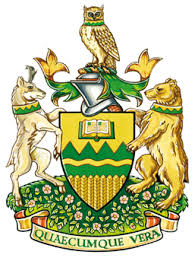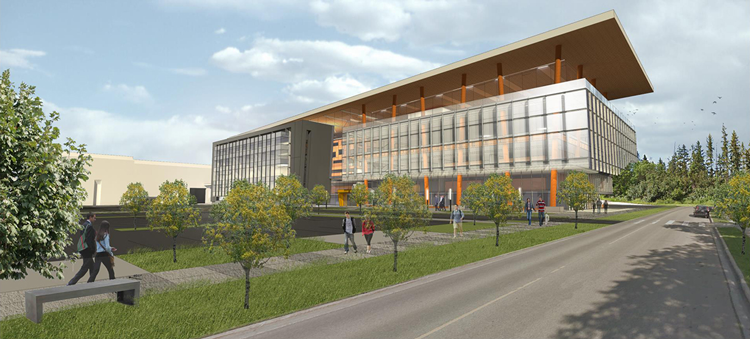

University of Alberta
A Brief History of Alberta
Paleo-Indians arrived in Alberta at least 10,000 years ago, toward the end of the last ice age. Over time they differentiated into various First Nations peoples, including the Plains Indian tribes of southern Alberta such as those of the Blackfoot Confederacy and the Plains Cree.
After the British arrival in Canada in the early 17th century, approximately half of Alberta, south of the Athabasca River drainage, became part of Rupert's Land which consisted of all land drained by rivers flowing into Hudson Bay. The French also arrived later this century.
Initially, the government preferred English-speaking settlers from Eastern Canada or Great Britain. However, in order to speed up the rate of settlement, the government under the direction of Minister of the Interior Clifford Sifton soon began advertising to attract settlers from continental Europe. Large numbers of Germans, Ukrainians and Scandinavians moved in, among others, often coalescing into distinct ethnic settlement blocks, giving parts of Alberta distinctive ethnic clusters.
At the dawn of the 20th century, Alberta was simply a district of the Northwest Territories. Local leaders lobbied hard for provincial status. Alberta became a province along with her sister Saskatchewan on September 1, 1905.
The province’s capital, Edmonton, is near the geographic centre of the province and is the primary supply and service hub for Canada's crude oil, the Athabasca oil sands and other northern resource industries. Calgary is the largest city in Alberta.

Education
Founded in 1908, the University of Alberta (UAlberta) is located in Edmonton. The university is consistently placed among the top universities in the world on global rankings, taking #84 in the 2015 QS survey. Of the 39,000 students attending UAlberta, 17% are international, coming from more than 150 different countries. The university provides extensive support services for its international student population.
The university offers courses and programs leading to officially and internationally recognised higher education degrees such as bachelor degrees, master degrees, doctorate degrees in several areas of study. In fact, UAlberta offers more than 200 undergraduate and 180 graduate programs, many of which are globally ranked by QS.
Not only is the University of Alberta one of Canada’s top universities, it is also among the world’s leading public research-intensive universities. It houses more than 400 distinct research laboratories. It also has a reputation for excellence across the humanities, sciences, creative arts, business, engineering, and health sciences. Home to world-leading facilities such as Canada’s National Institute for Nanotechnology and the Li Ka Shing Institute of Virology, the UAlberta attracts the best and brightest minds from around the globe. Our students choose from 400 undergraduate, graduate, and professional programs in 18 faculties.
Students and scholars from around the world are attracted to UAlberta for its reputation as a centre of research and innovation. International students are an integral part of our university. They enrich our classrooms with different perspectives and come from many countries around the world.
The university leads the country with the most 3M national teaching fellowships (Canada’s highest award for undergraduate teaching excellence). With over 100 years of history, the university is known globally for equipping graduates with the knowledge and skills to be tomorrow’s leaders. The main campus, in the centre of Edmonton, is minutes from downtown with bus and subway access through the city. Home to over 39,000 students, including more than 7,000 international students from 152 countries, the university fosters a supportive and multicultural atmosphere within a vibrant research environment.
The University of Alberta is a partner with IDP Education. IDP is a world leader in international student placement services and a proud co-owner of IELTS. It operates a large network of over 80 student offices in more than 30 countries, offering institutions an efficient and cost-effective way to reach potential students in multiple student source markets. IDP also partners with 600 leading institutions in five popular English-speaking countries.
For free information and study abroad application assistance, visit IDP Education offices at all ACE campuses.
IDP Study Abroad Resource Centres
